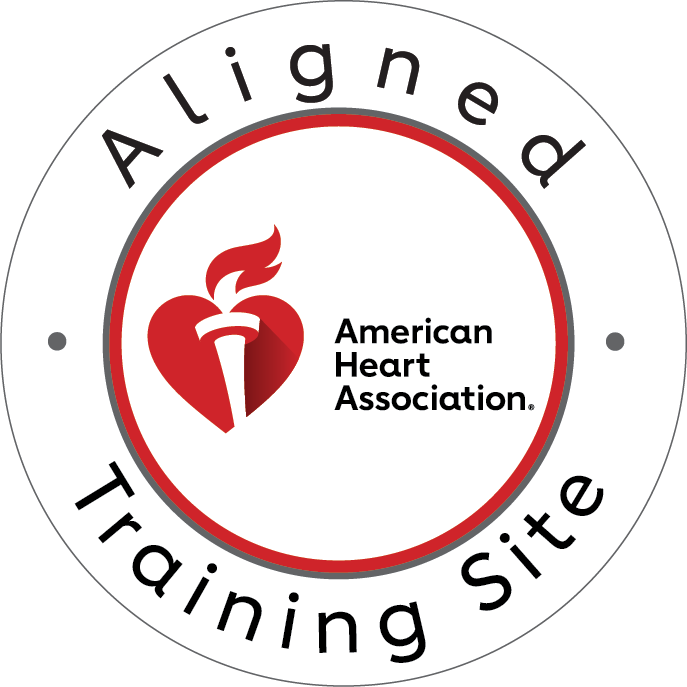Introduction
When an emergency strikes, knowing how to perform CPR can make the difference between life and death. However, the CPR technique for adults isn’t a one-size-fits-all solution—especially when it comes to children. Pediatric emergencies require a specialized approach to ensure effective care. This is where adapting the CAB (Compressions, Airway, Breathing) approach for children becomes critical.
In pediatric CPR, the anatomy and physiology of children mean adjustments must be made to ensure the life-saving procedure is effective. Whether you’re a healthcare professional, teacher, or parent, knowing how to tailor CPR to a child’s unique needs could save lives. This article breaks down the essentials of pediatric CPR, offering key insights on how to modify the CAB approach to provide the most effective care for children in need.
Understanding the differences and the correct application of pediatric CPR is essential not only for professionals but also for anyone in regular contact with children.
Understanding the CAB Approach
The CAB approach, which stands for Compressions, Airway, and Breathing, is the foundational sequence for CPR. It emphasizes immediate chest compressions to keep blood circulating, followed by ensuring a clear airway and providing rescue breaths. While this technique applies to adults and children alike, the application differs in significant ways when performing CPR on children, due to their smaller bodies and developing systems.
- C – Compressions: Chest compressions are critical in maintaining circulation to vital organs when the heart has stopped or is unable to function effectively. For children, the force and depth of compressions must be modified to match their smaller chest cavity.
- A – Airway: Opening the airway is necessary to ensure oxygen can reach the lungs. However, children’s airways are more fragile and can be blocked easily, so gentler, more cautious techniques are required.
- B – Breathing: Rescue breaths are used to provide oxygen when the child is not breathing adequately or at all. The volume and frequency of breaths differ from those of adults, as children’s lungs are smaller and can’t handle the same amount of air.
In pediatric CPR, adapting the CAB approach correctly is essential to avoiding harm and ensuring that the intervention is effective. The following sections will outline the key differences and how to perform each step appropriately for infants and children.
Key Differences in Pediatric CPR
Pediatric CPR requires several adjustments to accommodate a child’s smaller, more delicate body and unique physiological needs. These differences ensure that CPR is both safe and effective when applied to infants and children.
Compression Depth and Rate: For adults, chest compressions are performed at a depth of about 2 inches. For children, this depth is reduced to approximately 1.5 to 2 inches, depending on the size and age of the child. Infants require even gentler compressions—about 1.5 inches. The rate remains the same for all ages, around 100–120 compressions per minute, but it’s crucial to ensure compressions don’t cause harm by being too deep or too shallow.
Hand Position: The placement and number of hands used during chest compressions depend on the child’s size. For infants, two fingers are typically placed on the center of the chest just below the nipple line. For larger children, one or two hands may be used, depending on the rescuer’s strength and the child’s size. Adults require two hands, but children may only need one, ensuring less force is applied.
Rescue Breaths: The volume of air delivered during rescue breaths must be significantly lower for children and infants compared to adults. A child’s lungs are much smaller, so rescuers should deliver just enough air to make the chest rise visibly. Overinflating the lungs can cause damage or push air into the stomach, leading to complications like vomiting. For infants, covering both the mouth and nose with your mouth is recommended to provide an effective breath.
Compression-to-Breath Ratio: While the standard compression-to-breath ratio for adults in CPR is 30:2, this can change during pediatric CPR depending on whether there is one rescuer or two. For a lone rescuer, the ratio remains 30 compressions to 2 breaths. However, if two rescuers are present, the ratio is adjusted to 15 compressions to 2 breaths, allowing for quicker cycles and more frequent breaths, which are crucial for oxygen delivery in smaller bodies.
These differences highlight the need to modify the technique based on the size and age of the child, ensuring that CPR is performed with the right amount of force and precision to be effective without causing injury.
Step-by-Step Guide to Pediatric CPR
To perform pediatric CPR effectively, it’s crucial to follow the proper steps tailored to children’s specific needs. Below is a step-by-step guide for administering CPR to infants (under 1 year old) and children (ages 1 to 8 years old).
1. Assess the Child
- Check for Responsiveness: Gently tap the child and shout to check if they respond. If the child is unresponsive, proceed immediately with CPR.
- Call for Help: If someone else is present, instruct them to call emergency services while you begin CPR. If you are alone, perform 2 minutes of CPR before calling for help unless you have immediate access to a phone.
2. Perform Compressions
- For Infants:
- Place two fingers in the center of the infant’s chest, just below the nipple line.
- Press down approximately 1.5 inches, allowing the chest to fully recoil between compressions.
- Deliver 30 compressions at a rate of 100–120 per minute. The depth should be firm but gentle to avoid injury.
- For Children:
- Place the heel of one hand (or two hands, depending on the size of the child) in the center of the child’s chest.
- Compress the chest about 2 inches deep, following the same rate of 100–120 compressions per minute.
- Ensure the chest recoils fully between compressions to allow the heart to refill with blood.
3. Open the Airway
- Head Tilt-Chin Lift: After completing compressions, gently tilt the child’s head back to open the airway. For infants, be careful not to overextend the neck as this could block the airway. For children, a gentle but firm tilt of the head is appropriate.
- If you suspect the child may have suffered a spinal injury, use a jaw-thrust maneuver to open the airway without moving the neck.
4. Give Rescue Breaths
- For Infants:
- Cover both the infant’s mouth and nose with your mouth, creating a seal. Give 2 gentle breaths, each lasting about 1 second, watching for the chest to rise.
- For Children:
- Pinch the child’s nose shut, cover their mouth with yours, and give 2 breaths. Each breath should be enough to make the chest rise visibly.
- If the chest doesn’t rise, recheck the airway for blockages before attempting another breath.
5. Continue CPR Cycles
- Perform cycles of 30 compressions and 2 breaths if you are the only rescuer, or 15 compressions and 2 breaths if there are two rescuers present. Continue this pattern until help arrives, the child starts breathing, or you become too exhausted to continue.
6. Use of an AED (Automated External Defibrillator)
- For Infants and Children:
- If an AED is available, turn it on and follow the voice prompts. Most AEDs have pediatric settings or smaller pediatric pads. Use the pediatric pads if available and follow the AED’s instructions. Place the pads on the child’s chest according to the AED’s diagrams.
- If pediatric pads are not available, adult pads can be used on a child older than 1 year, but make sure they do not overlap. Place one pad on the chest and the other on the back, between the shoulder blades.
By following these steps carefully, you can ensure the best possible outcomes in pediatric emergencies. Understanding the adjustments needed for children and infants is essential for performing effective, life-saving CPR.
Common Mistakes in Pediatric CPR and How to Avoid Them
While performing pediatric CPR, even small mistakes can impact the effectiveness of your efforts. Knowing common pitfalls can help ensure the procedure is performed correctly and efficiently in an emergency. Here are some common mistakes and how to avoid them:
1. Too Shallow or Too Deep Compressions
- Mistake: Applying too little or too much force when performing chest compressions is a frequent error. Shallow compressions won’t circulate blood effectively, while overly deep compressions can cause injury.
- Solution: Remember that compression depth varies by age. For infants, compress about 1.5 inches deep, while for children, compress about 2 inches. Always allow the chest to fully recoil after each compression to maximize blood flow.
2. Incorrect Hand or Finger Placement
- Mistake: Misplacing your hands or fingers during compressions can decrease effectiveness and potentially cause injury.
- Solution: For infants, use two fingers just below the nipple line. For children, place one hand (or both, depending on the child’s size) in the center of the chest. Keep your compressions centered and precise.
3. Inadequate Rescue Breaths
- Mistake: Delivering rescue breaths that are too forceful or too weak. Overinflating the child’s lungs can lead to air entering the stomach, causing complications like vomiting, while inadequate breaths won’t provide enough oxygen.
- Solution: Give just enough air to make the chest rise visibly. For infants, cover both the nose and mouth with your mouth and use gentle breaths. For children, pinch the nose and provide smaller, steady breaths.
4. Skipping AED Use or Delaying Its Application
- Mistake: Failing to use an AED or waiting too long to apply it reduces the chances of survival in cardiac arrest situations.
- Solution: If an AED is available, use it as soon as possible, even while CPR is being performed. Pediatric pads should be used if available, but if not, adult pads can be used with proper placement (one on the chest and one on the back for children).
5. Not Adjusting Compression-to-Breath Ratio for Two Rescuers
- Mistake: When two rescuers are present, some forget to switch to the pediatric ratio of 15 compressions to 2 breaths.
- Solution: When a second rescuer is available, switch to 15 compressions followed by 2 breaths to ensure quicker cycles and more frequent oxygenation for the child.
By avoiding these mistakes, you increase the chances of successful resuscitation. Pediatric CPR requires careful attention to detail and specific adaptations, but when done correctly, it can dramatically improve outcomes.
The Importance of Regular Training and Certification
Even though pediatric CPR is a crucial skill, it can be challenging to remember all the steps during an actual emergency—especially if you’re not regularly practicing. For this reason, regular training and certification are key to ensuring you can confidently and effectively respond to a pediatric emergency.
1. Ongoing CPR Certification
- Why It’s Important: CPR guidelines and techniques evolve based on new research. Regular recertification ensures you are up-to-date with the latest recommendations from authoritative bodies like the American Heart Association (AHA). Knowing the most recent techniques increases the likelihood of successful resuscitation.
- Frequency: Pediatric CPR certification typically lasts for two years. Recertifying ensures you retain muscle memory and stay familiar with the correct procedures.
2. Hands-On Practice
- Why It’s Important: CPR is a physical skill, and theory alone isn’t enough. Attending regular hands-on classes helps maintain proficiency in the proper compression depth, hand placement, and rescue breath techniques. Practicing with manikins that simulate a child’s body size and response helps build confidence.
- Simulated Scenarios: Hands-on classes often incorporate simulated pediatric emergencies, allowing you to practice under realistic conditions. This builds the mental preparedness needed to stay calm and focused during a real-life emergency.
3. First Aid and AED Training
- Expanded Skills: Pediatric CPR is often paired with first aid and AED training, as these skills complement each other. In many cases, having a well-rounded skill set can mean the difference between stabilizing a child until professional help arrives or worsening the situation. AEDs, in particular, play a vital role in treating sudden cardiac arrest in children, and being familiar with their use can significantly enhance survival rates.
4. Confidence in Emergencies
- Why It’s Important: In stressful situations, having confidence is half the battle. Regular training and certification provide peace of mind that, should an emergency arise, you have the skills to act quickly and effectively. This confidence can help save lives by ensuring timely intervention when every second counts.
By staying current with CPR certification and practice, you equip yourself to respond effectively to pediatric emergencies, whether as a medical professional, teacher, or parent. It ensures you’re prepared, knowledgeable, and confident in delivering life-saving care.
Conclusion
Adapting the CAB approach for children and infants is critical to performing effective CPR in pediatric emergencies. By understanding the differences in chest compression depth, rescue breaths, and airway management, you can tailor your response to the unique needs of a child or infant.
Whether you’re a healthcare professional, caregiver, or simply someone who wants to be prepared, learning pediatric CPR could be the difference between life and death. Regular practice, certification, and knowledge of AED use to enhance your ability to respond to emergencies with confidence.
Empowering yourself with pediatric CPR skills not only saves lives but also ensures you’re equipped to handle the most precious emergencies—those involving children.






